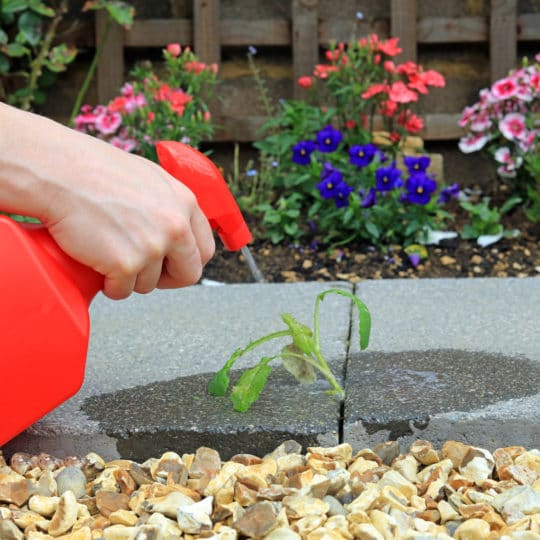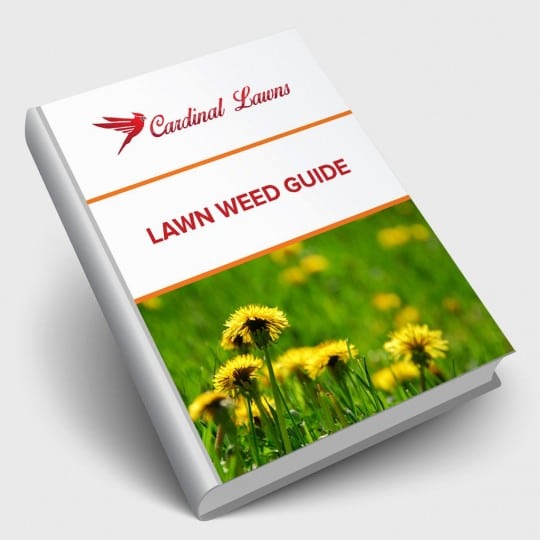7 Weed Control Methods
For a Pristine or Practical Landscape
Posted
May 25, 2023

Spring has sprung for a few months now. How’s your lawn and garden doing? By this point, you’ve probably mowed the grass a few times, considered new plants, and tried to limit the number of weeds. While the lawn may not always need mowing and established plants are not as high maintenance, weeds have a way of taking over if not addressed. Here are seven weed control methods to try—if you haven’t already—to help you through the rest of the season.
Pristine Weed Control Methods
To clarify, weeds are considered any plant you don’t want in your lawn or garden. Some plants—like dandelions and clover—may be seen as weeds to a majority of gardeners. However, others may let these plants grow as ground cover or to help the pollinators.
If you’d rather have a pristine, green lawn and only grow certain plants in your garden, there are a few weed control methods to try.
- Proper lawn care. The number one way to keep your lawn lush and weed-free is to regularly maintain it. Weeds run rampant through weak lawns with bare patches, compacted soil, and other preventable problems. Regular mowing, watering, and fertilizing helps to keep grass strong enough to block out weeds. If the grass is thriving, there’s no room for weeds to grow.
- Mulch. When it comes to your garden, mulch is one of the top barriers for weed control. Some gardeners choose to layer a chemical weed blocker or landscape cloth underneath a blanket of mulch. Others may simply spread a few inches of nutrient-rich mulch around trees and desirable plants to smother any weed seed.
- Herbicide. There’s a wide variety of products on the market formulated to stop certain weeds before or after they’ve germinated. Timing is an important part of the application process. There are granulated products for broader applications throughout your lawn. Spray formulas are more for spot treating a smaller area of weeds. Just be sure you know which product you’re using. Some will only target weeds while others will kill anything it touches—including grass and desirable plants.
- Hand-pulling. If you don’t mind getting your hands dirty, pulling out a weed or two here and there is an easy, natural method of control. Be sure to get more than just the flower and stalk. Removing the root helps to ensure the weed won’t grow back.
While these methods take a level of consistency, you can easily get into a habit that helps you keep your lawn and garden weed-free. If you’re looking for a slightly easier route, read on.
Landscaping Weed Solutions
If you’re not a fan of weeds or a lot of work, there are a few other weed control methods to try.
- Ground cover. Certain plants—like clover and ivy—are considered weeds to some people and weed blockers to others. Planting a quick-spreading ground cover can help you spend less time mowing and weeding.
- Rock gardens. You can save yourself the time, money, and energy it takes mulching year after year by putting down a bed of rocks around trees and plants. Pick between small pebbles or large stone for a more natural, maintenance-free look.
- Ponds, pools and patios. The less grass and garden area you have, the less you have to weed and mow. From a small pond to a long winding path to a backyard pool, fill your landscape with other natural elements. Of course, some of these elements will need their own level of maintenance, but that’s another blog for another time.
Depending on your definition of weeds and the level of maintenance you’re comfortable with, there’s a wide range of control methods to choose from. Contact Cardinal Lawns for more options and to talk about which option would be best for your specific yard.

Download Your FREE Lawn Weed Guide
Before weeds take over your yard this season, learn to identify and prevent them in the first place. Keep your lawn looking great all year!